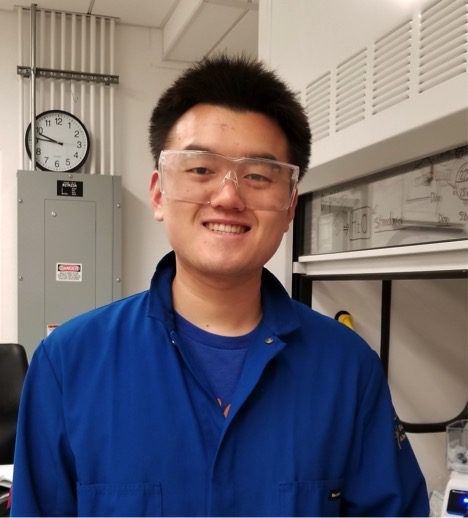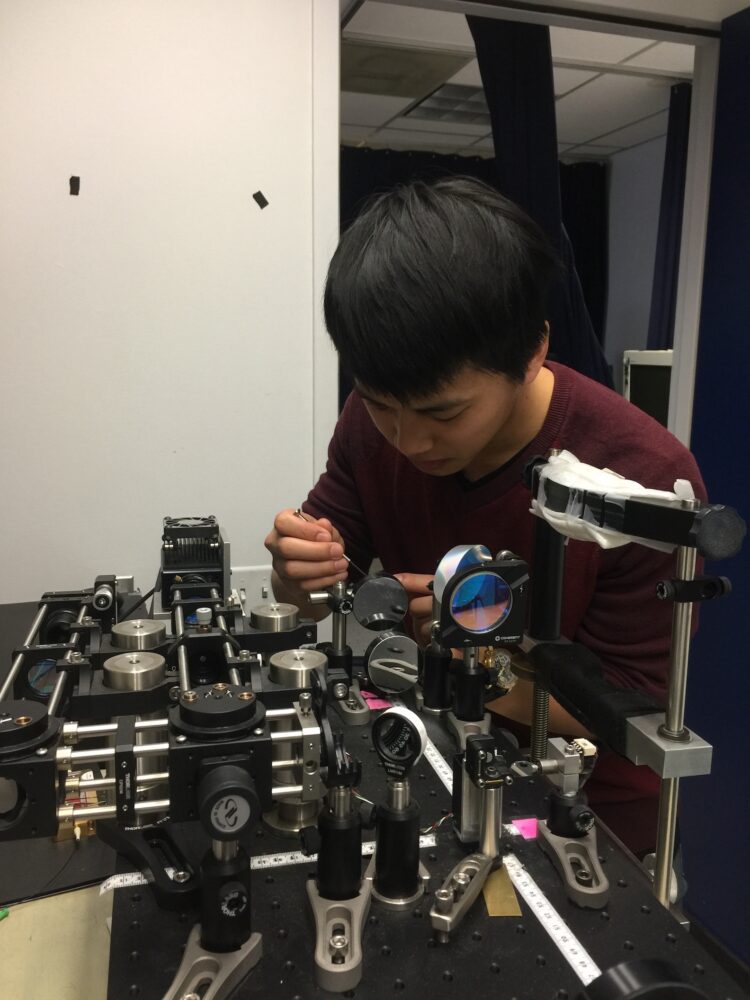Ryan Lee

Some of the biggest technological hurdles come from the existence of electrical resistance in everyday materials, causing a waste of energy. High-temperature superconductivity is a great solution to this problem. High-temperature superconductors can conduct electricity without dissipating any energy and possess many special magnetic properties, making them useful for long distance power transmission, power storage, transportation, and magnetic medical imaging. However, the currently best high-temperature superconductors still require cryogenic temperatures to be superconducting, making them cost inefficient. Explaining the cause for their behavior has perplexed scientists for many decades, and […]
Susanna Ming-Yu Dang

Lymphocytes are a type of white blood cell that are essential to the function of vertebrate immune systems. Lymphocytes include Natural killer (NK) cells, an important component of the innate immune system. NK cells function through families of stimulatory and inhibitory receptors, providing early response to viral infections and tumor development. In mice, Ly49 C-type lectin receptors make up the largest family of inhibitory receptors expressed on NK cells. NK cells require Ly49 receptor activity in order to discriminate between healthy host cells and infected or abnormal cells and respond […]
Michael Yi

Chemotherapy is one of the most widely known treatments for cancer, both for its effectiveness yet fatal side effects. Doxorubicin, a common type of chemotherapy drug, has the ability to kill malignant tumor cells, but is limited by the harmful interactions excess molecules cause towards human tissue. Various resins and activated carbons are being tested for drug capturing mechanisms, as many drug molecules are shown to have high binding capacities towards them. Doxorubicin, however, is more complex due to its ionic nature, and requires the use of ion exchange and […]
Camille Rubel

The substitution of fluorine atoms for hydrogen atoms in drug candidates has been shown to improve the biostability of those molecules. However, few reported methods exist that fluorinate complex organic molecules with high selectivity. An alternate approach to the synthesis of fluorinated drug candidates is the addition of functional groups to compounds that contain fluorine. Thus, the functionalization of fluorinated compounds would enable the discovery of improved drug candidates. Recent research has described the catalytic silylation of aryl C-H bonds. Aryl silanes are bench-stable, and the silyl group can be […]
Eric Yu

A covalent organic framework is a crystalline structure consisting of covalently bonded organic molecules in a porous network. 2D COFs as thin as a single atomic layer are expected to have exotic electronic properties due to reduced dimensionality. My research is focused on several aspects of these novel nano-structures, including their synthesis on metallic substrate through bottom-up fabrication, atomic-scale visualization utilizing the variable temperature – scanning tunneling microscope (VT-STM), and electronic structure analyzed through spectroscopic techniques. Current methods of thermal evaporation of molecules has limitations when the precursor size is […]
Sab Sikder

Dementia is a very difficult disease to live with as it can progressively deteriorate the cognitive function of a patient to the tragic point where, for example, friends and family become unrecognizable, and basic taskssuch as walking, eating, using the restroomrequire continuous, everyday assistance from family members. However this places a significant physical, socioeconomic, and psychological burden on the caregiverswhich has been shown to increase their risk for physical and psychiatric illnesses. They have shown to have a higher prevalence of depressive and anxiety disorders, compromised immune function along with […]
Sierra Raby

The U.S. food system is plagued by food insecurity, which disproportionately affects poor communities and communities of color. Urban agriculture can help remake food systems and mitigate food insecurity by providing opportunities to grow local, nutritious food. However, urban farms often struggle with pest management, and previous survey research on San Francisco Bay Area urban farms indicates that most farms experienced crop losses due to herbivorous insects. Developing low-input agroecological pest management practices for urban environments is vital and these strategies must consider the unique conditions of urban agroecosystems. As […]
Jeffrey Wang

Cyclic di-AMP (c-di-amp) is a nucleotide second messenger molecule with an integral role in the pathogenesis of many bacteria; however the physiological roles of this molecule in bacteria have only recently begun to be understood. Bacteria are known to undergo physiological and regulatory changes in response to nutrient starvation. Starvation induces the stringent response, which is controlled by the key alarmone molecule (p)ppGpp and is involved in mediating downstream biological processes including antibiotic tolerance, ribosome hibernation, and activating virulence genes. While depletion of c-di-amp and consequent elevation of intracellular (p)ppGpp […]
Derek Wan

Our eyes are never stable even when we attempt to maintain a steady gaze. The characteristics of microscopic eye motion during fixation have been proposed as diagnostic biomarkers for certain neurological and visual disorders. However, the use of scanning laser ophthalmoscopes (SLOs) in clinical and research settings is often limited to rough estimates of fixation stability, due to low frame rates inherent in videos. Such estimates preclude meaningful analyses and result in non-standardized methods to quantify eye motion across research laboratories and clinics. Furthermore, existing technology is not being utilized […]
Jacqueline Dang

I am working with my SURF mentor on optimizing binding of mannose conjugated nanosheets to E. Coli bacteria by controlling expression of pili. Loop are created on the nanosheet surface in an air-water interface by a rocking mechanism. These loops protrude from the nanosheet bilayer, mimicking glycoproteins and glycolipids that protrude from cell membrane surfaces.Type 1 pili, which are the structures that project from bacterial cell surfaces that govern binding, are primarily controlled by the fim operon. The fim operon has a multitude of constituent elements that code for fimbrae […]